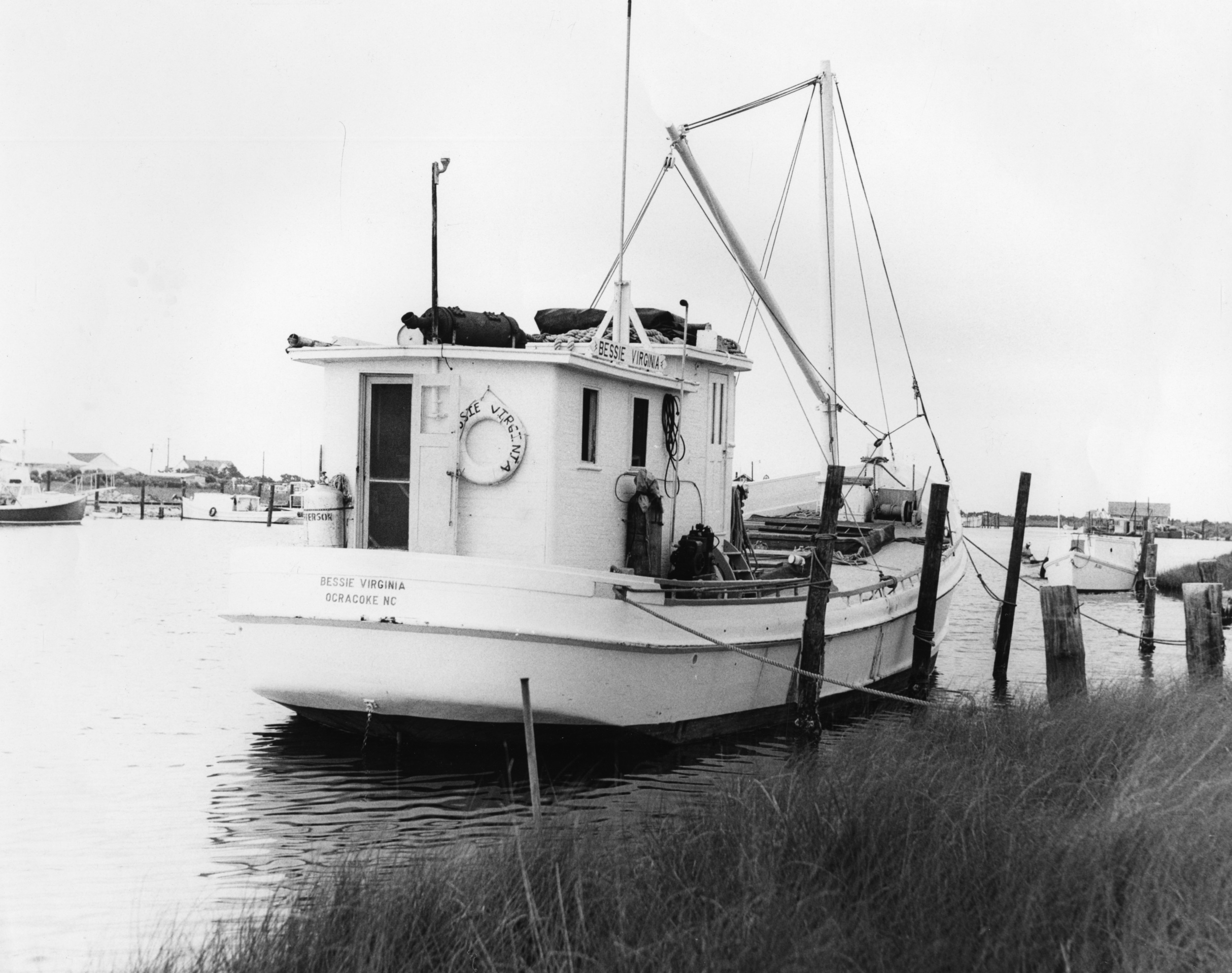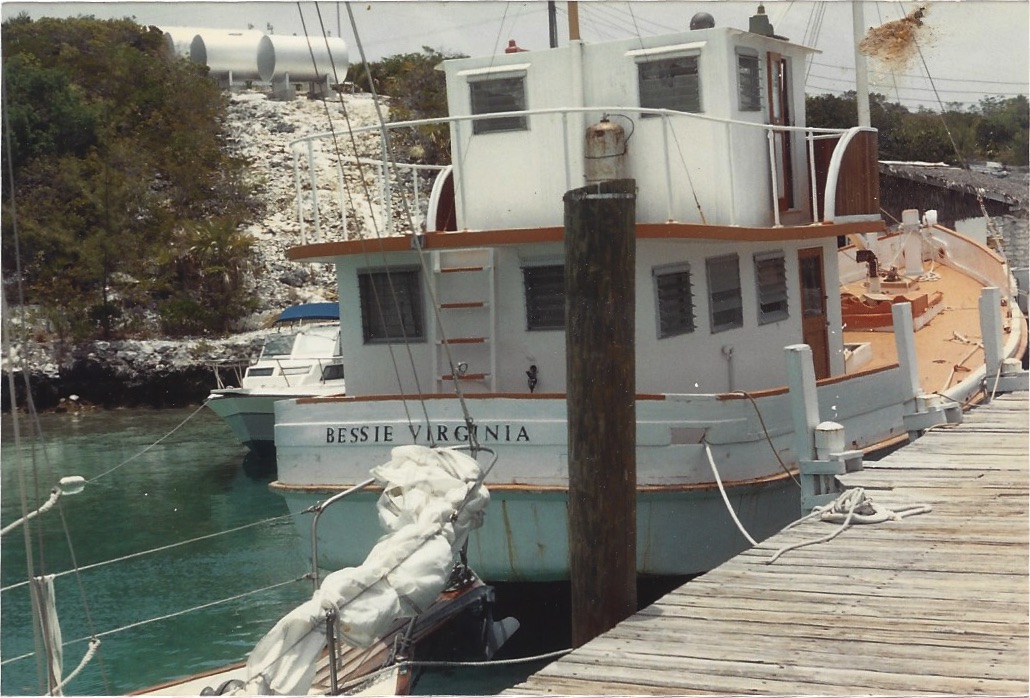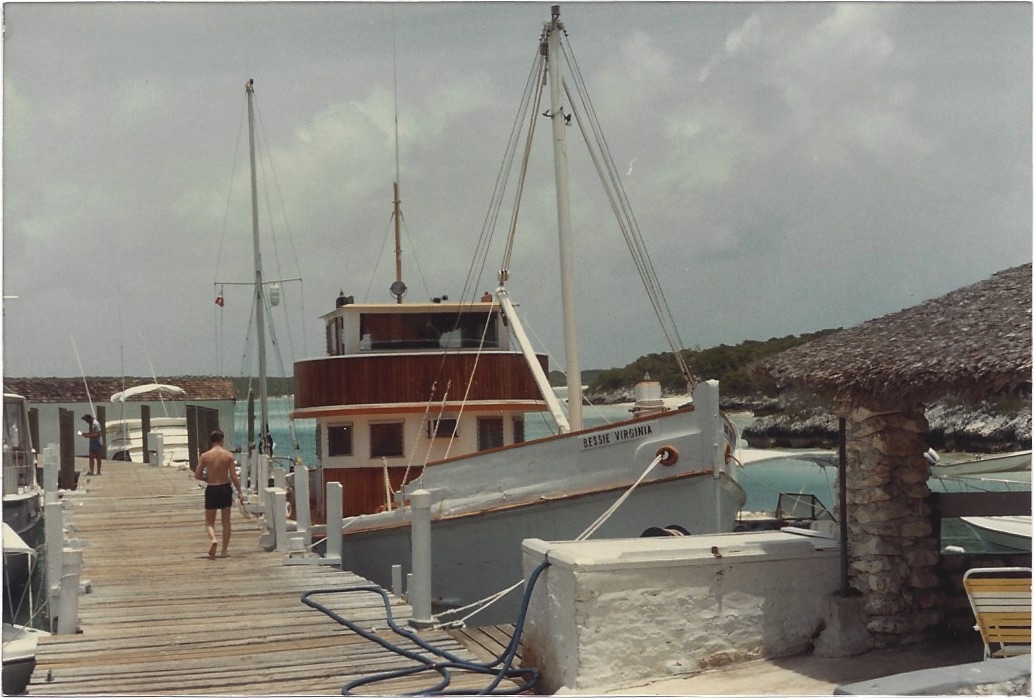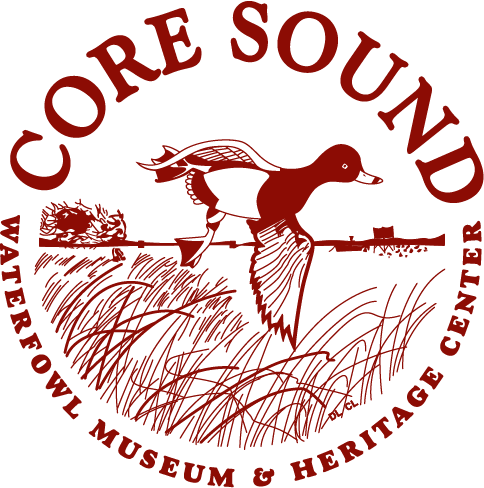Bessie Virginia
Last Freight Boat to Ocracoke



Listen
Read
Bessie Virginia was a gasoline powered, 65-foot freight boat with a pilot house on the stern. She was built in 1931, and ran up to ninety tons of freight weekly between Ocracoke and Washington, NC. Freight included caskets, livestock, fuel, produce, molasses, and even automobiles. Fish was transported to the mainland. Sullivan Garrish recalled that “several barrels of salted fish” would be “traded off for corn, potatoes, and all kinds of produce.”
Bessie Virginia was the last freight boat making the run between Ocracoke and the mainland. Van Henry O'Neal was captain and Powers Garrish was mate. The Bessie Virginia was retired in the early 1960s after the Oregon Inlet bridge was built, making car and truck connections to the north much more convenient. Fanny Pearl Fulcher, who attended school on the mainland as a girl, said that the trip via freight boat was lengthy. “We used to leave here by freight boat in the early morning. It would take us all day long to go up the river and across Pamlico Sound to get into Washington.”
Ocracoke had had little access to fruit except for what was transported on the freight boat from Washington, such as oranges, apples, and even coconuts, pineapples, lemons, and limes from the West Indies. Island churches has a “festival” of sorts each year, selling lemon pies, pineapple cake, and ice cream flavored with a variety of fruits. Ocracoke resident Elsie Ballance Garrish, who took the freight boat to and from boarding school in Washington, said that the freight boat also delivered firewood “if you could afford to buy it.”
The freight boat carried visitors to the dock of the Pamlico Inn for a week’s vacation of sun bathing, fishing, and a Saturday night square dance. Elsie Ballance Garrish attended the square dances at the Pamlico Inn. She said in the summertime, musicians from Washington came to the island on the freight boat, with brass instruments, guitars, and the like, indicating that an orchestra-style dance occasionally took place. She said that an especially large square dance took place in the community on the Fourth of July, a tradition that continues today.
Fanny Pearl Fulcher, interviewed in 1974, recalled the days before Silver Lake was dredged out in the 1930s. “In those days it was difficult for a merchant to get his goods to the store,” she said. “The big boats coming from Washington could not get up in ‘the ditch’ to the docks.” She recalled that freight boats had to anchor out in the channel, and storekeepers met them in their smaller gas boats to “unload the freight and then bring it in to the store, which was doubly hard.” Her father, who owned what is now the Community Store, would get 100 pound cakes off the freight boats and deliver smaller blocks of ice to people’s homes with his two-wheel cart and horse in the 1910s and 1920s.
She recalled other stores on the creek, including M.L. Piland’s which later became Ike O’Neal’s store, and the largest proprietor, J.W. McWilliams Company, where her father got his start in retail. “I worked at my father’s store in the summer,” she said. Regular customers paid by the month, and occasional customers would say, “Just put this on a bag.” Her father would write the amount owed on a paper bag and “stick in in a file.” She added, “Some of the people paid and some of them didn’t.”
Fanny Pearl Fulcher said her father was left “holding the bag” during the Depression. “Papa would send his receipts from the store up by boat to Washington and the boatman would deposit the money in the bank as he did for all the other merchants on the island.” She said the money was just deposited when the banks closed due to the Depression, and her father “never did recover that money.”
Bland Simpson in The Inner Islands relays a Bessie Virginia tale told by Blount Rumley, director of the Estuarium in Washingon. "He recalled a Washington-to-Ocracoke boat named the Bessie Virginia coming up one time with a load of crabs in the hold. Finding that the local market for crabs was flooded, the captain went all through the town of Washington begging people to come take these crabs. 'My father got three pickup truck loads,' Blount said. 'Spead them all over the backyard for fertilizer. Mama was so mad! She was furious at him about that. Course it did smell right much. Neighbors didn't like it too much either.'"
She recalled other stores on the creek, including M.L. Piland’s which later became Ike O’Neal’s store, and the largest proprietor, J.W. McWilliams Company, where her father got his start in retail. “I worked at my father’s store in the summer,” she said. Regular customers paid by the month, and occasional customers would say, “Just put this on a bag.” Her father would write the amount owed on a paper bag and “stick in in a file.” She added, “Some of the people paid and some of them didn’t.”
Fanny Pearl Fulcher said her father was left “holding the bag” during the Depression. “Papa would send his receipts from the store up by boat to Washington and the boatman would deposit the money in the bank as he did for all the other merchants on the island.” She said the money was just deposited when the banks closed due to the Depression, and her father “never did recover that money.”
Bland Simpson in The Inner Islands relays a Bessie Virginia tale told by Blount Rumley, director of the Estuarium in Washingon. "He recalled a Washington-to-Ocracoke boat named the Bessie Virginia coming up one time with a load of crabs in the hold. Finding that the local market for crabs was flooded, the captain went all through the town of Washington begging people to come take these crabs. 'My father got three pickup truck loads,' Blount said. 'Spead them all over the backyard for fertilizer. Mama was so mad! She was furious at him about that. Course it did smell right much. Neighbors didn't like it too much either.'"
Blount rumley, Director of the estuarium in Washington, talks tells stories about the bessie virginia
LEARN MORE
Hyde County History: Hyde County Bicentennial Project. Hyde County Historical Society, 1976.
Howard, Philip. Freight Boats. Ocracoke Island Journal, October 27, 2011. http://villagecraftsmen.blogspot.com/2011/10/freight-boats.html
Interview of Fanny Pearl Fulcher by Michael V. Wurm, Cape Hatteras National Seashore Oral History Collection, 1975.
Interview of Elsie Ballance Garrish by Amy Glass, the Southern Oral History Program of the University of North Carolina and Cape Hatteras National Seashore Oral History Collection, 1988.
Interview of Sullivan Garrish by Michael V. Wurm, Cape Hatteras National Seashore Oral History Collection, 1974.
Interview of Ben Spencer by Michael V. Wurm, Cape Hatteras National Seashore Oral History Collection, 1974.
Simpson, Bland. The Inner Islands. University of North Carolina Press, 2006.



